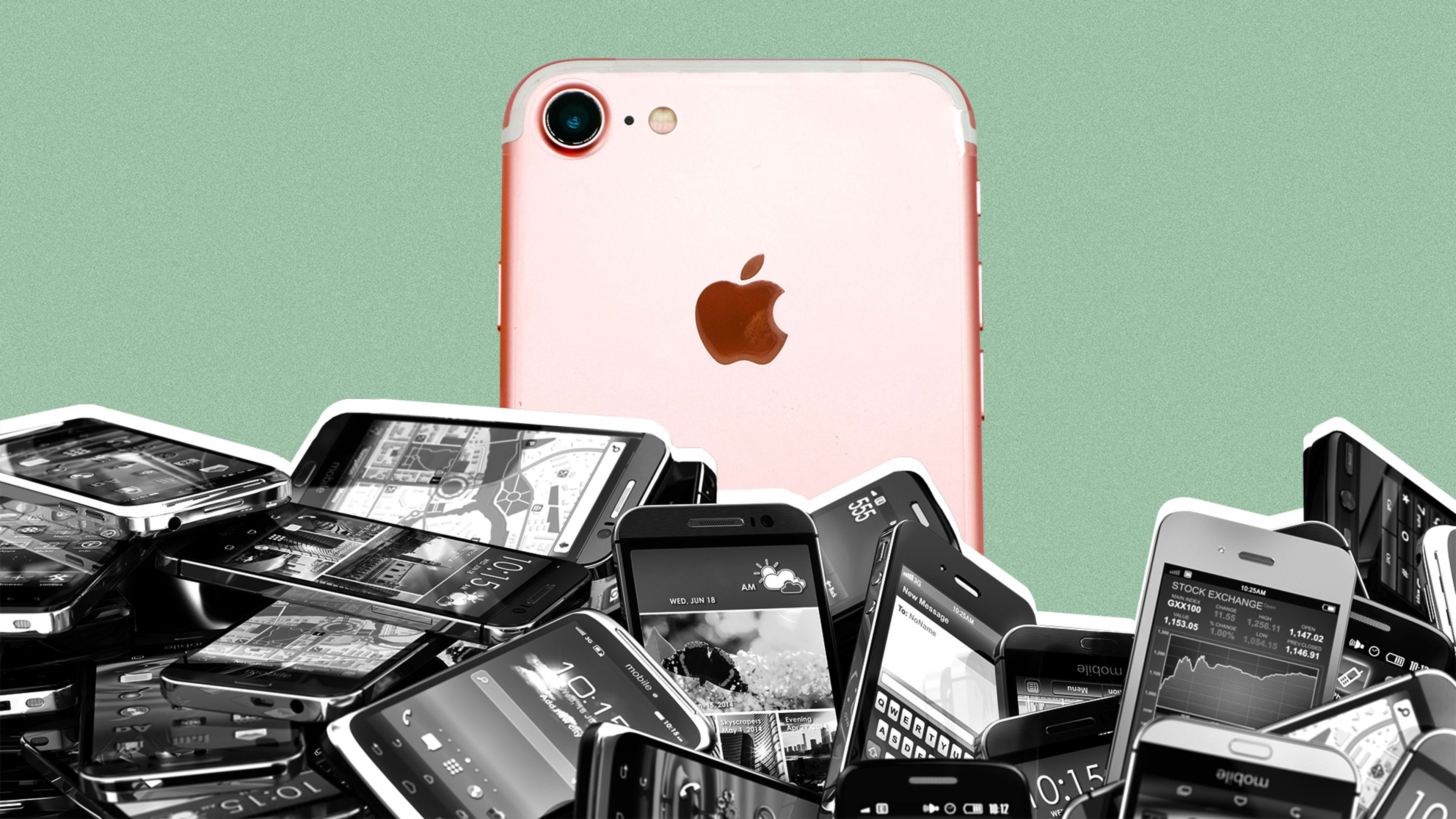Apple became the biggest smartphone seller in the world in the holiday quarter, beating Samsung and Huawei, reports Counterpoint Research. After hearing people helpfully explain for more than a year that the iPhone’s best days are behind it, that was a surprising piece of news. Apple no longer reports unit sales for its devices, but Counterpoint believes the company sold 72.9 million phones, which is near the top of the range of most analysts’ estimates.
Apple did report that revenue from iPhone sales jumped 8% to $55 million in the holiday quarter, a dramatic turn of events for a business that had seen declines in each of the four previous quarters. All those iPhone sales helped Apple turn in its best-ever quarterly results, although they weren’t the only contributing factor.
The iPhone’s strong quarter wasn’t due to a new model with a radical new design, like 2014’s iPhone 6 or 2017’s iPhone X. Instead, the line benefited from a series of smaller choices Apple made about how to market its smartphone:
1. The iPhone 11 line is packed with features
Every year, Apple makes a choice on which new technologies and upgrades to roll into this year’s model. The list of candidates is usually quite long. And it depends not only on what new Apple technologies are ready, but also on what’s already in the market and what phone buyers seem to value.
This process works better some years than in others. In Apple’s 2019 phones, it was a major success. The company gave the entry-level iPhone 11 two rear cameras, thereby making a feature formally reserved for higher-end models into standard equipment—and giving folks a reason to buy a new phone even if their budget didn’t allow for the priciest iPhones.
Those who did spring for an iPhone 11 Pro or Pro Max got three cameras, a first for the iPhone. The market was ready for it, and the benefits of Apple’s integration of the three cameras with the image processing software and AI in the phones are apparent in the quality of the photos.
Apple also wisely sacrificed a little bit of thinness in the phones so that it could put in a larger battery. That, together with new power efficiencies in the software, resulted in noticeably longer battery life—among the most universally appreciated improvements a phone can have.
2. Apple got more aggressive on pricing
The iPhone 11 Pro and Pro Max are big improvements over 2018’s top tier iPhones, with better batteries, displays, cameras, and batteries. But Apple put the new phones at the same $999 and $1,099 starting prices as their 2018 predecessors.
More strikingly, the company priced the base iPhone 11 model—the one with only two cameras on the back—at a very approachable $699. The iPhone 11 is a big improvement over the iPhone XR (and arguably over the $999 iPhone XS, for that matter), and Apple priced it at $50 less than the XR.
As always, the 2019 iPhones aren’t exactly cheap, but they all offer more value for the buck than their predecessors. That made pulling the trigger on an upgrade an easier choice for owners of older iPhone models.
3. This year’s lineup is easier to understand
Regardless of what you thought about Apple’s 2018 iPhones—the XR, XS, and XS Max—their nomenclature was confusing. The relative value and feature differences wasn’t immediately apparent in the names of the phones. Even knowing how to pronounce “XR” and “XS” wasn’t obvious.
In 2019 Apple returned to using actual numbers in the names of the phones. It narrowed the line down to a base model (iPhone 11), a more advanced version (iPhone 11 Pro), and an advanced version with a jumbo screen (iPhone 11 Pro Max). Simple.
4. Apple made it easier to buy a new iPhone
In 2019, Apple began tying the purchase of a new iPhone in with its other products. Everybody who bought one of the new phones (or a new iPad, iPod Touch, Apple TV, or Mac) got a free year of the Apple TV Plus. The streaming service normally sells for $4.99 a month.
Apple also launched its Apple Card credit card during 2019. With its 3% cash back for Apple Store purchases, it acts as a rewards program for Apple fans. People who bought a new iPhone on the card could also split the cost up into 24 monthly payments and pay no interest.
Apple didn’t rely solely on the iPhone for its winning holiday quarter. Its services business saw another big leap, with a growth of 17% over the same quarter in 2018. And its wearables, including the Apple Watch and the AirPods, grew 37% from the year earlier quarter. But the iPhone continued to dominate, contributing just over 60% of overall revenue.
One strong holiday quarter doesn’t reverse the trend of cooling growth for the iPhone. But it does put the brakes on any decline of the iPhone as the centerpiece of Apple’s business—and proves that if you give people a better phone and make it simple to understand and buy, that centerpiece can keep growing.
Recognize your brand’s excellence by applying to this year’s Brands That Matter Awards before the early-rate deadline, May 3.
